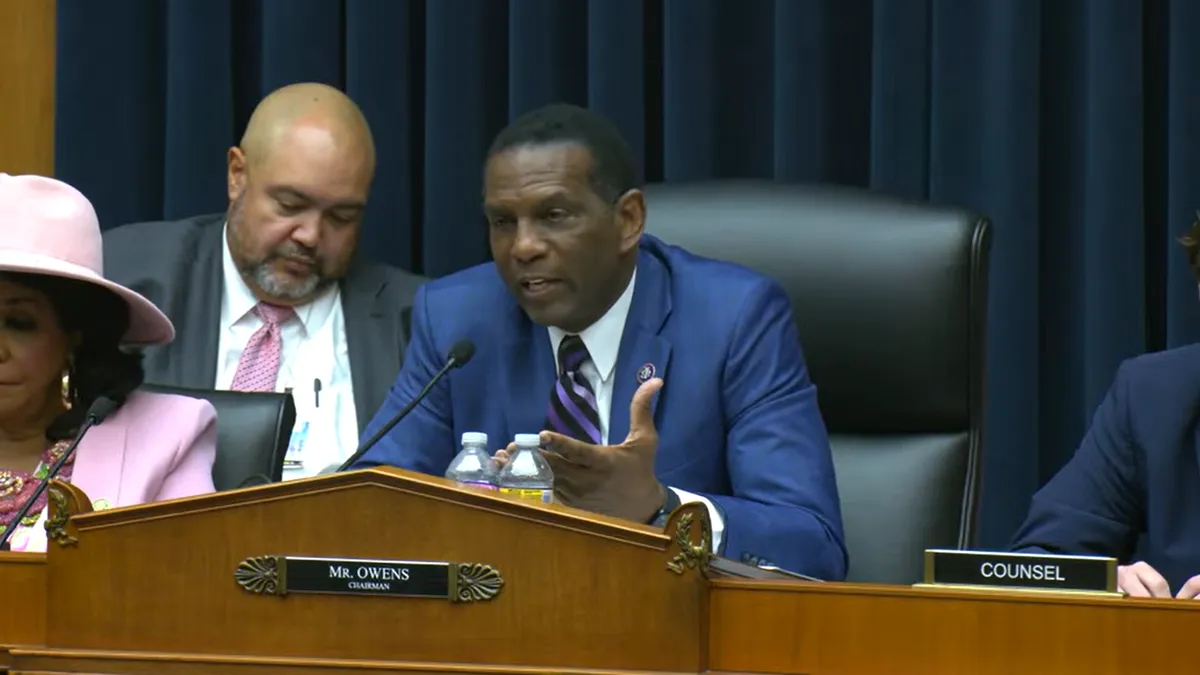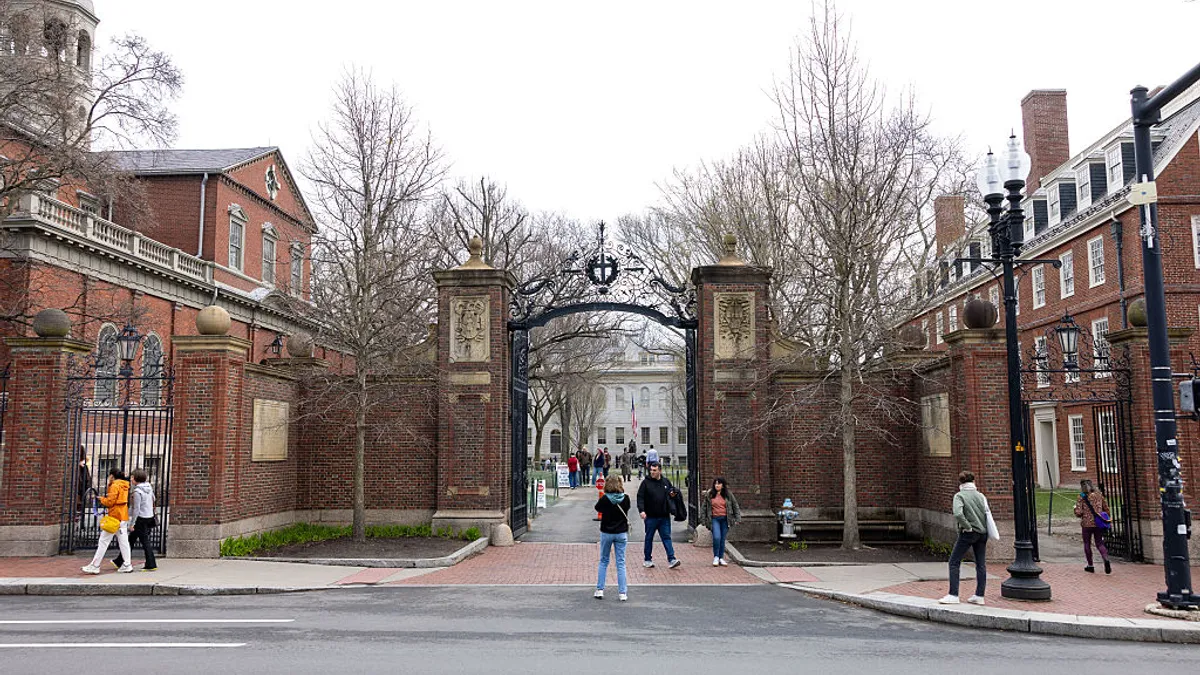In American higher education, it’s often said that a perfect storm is brewing, characterized by economic headwinds, fewer traditional students and political meddling in college operations.
Among those problems is declining public trust in higher ed, in part because college costs have jumped, with students and families skeptical they’ll actually see a strong return on investment.
In light of these trends, policymakers have begun scrutinizing college pricing much more closely — which they did Thursday at a hearing of the House Subcommittee on Higher Education and Workforce Development.
Democrats and Republicans on the subcommittee repeatedly took opportunities to plug legislative proposals that their respective parties have crafted to lower costs and hold colleges accountable for poor outcomes, like the GOP’s Promoting Employment and Lifelong Learning, or PELL, Act.
It would authorize Pell Grants for short-term academic programs and ensure "students and taxpayers receive a positive return on investment within three years or less.” Democrats, meanwhile, endorsed the Biden administration’s regulatory plan that would end federal funding for career programs that don’t meet a debt-to-earnings ratio, called gainful employment.
However, lawmakers from across the political spectrum seemingly agreed — something must change.
“Restoring the value of a college education requires thoughtful structural reform of the Higher Education Act,” Republican Rep. Burgess Owens, the subcommittee’s chair, said during the hearing Thursday. Owens was referencing the federal law that is the primary vehicle for higher ed policy, which was last reauthorized in 2008.
Root of the problem
While it’s widely understood that college costs have soared, lawmakers and pundits attribute the increase to different factors.
A couple of Democrats during Thursday’s hearing brought up state disinvestment in public higher ed, for instance — the idea that colleges raised their tuition rates out of necessity because they received fewer taxpayer dollars.
State funding has actually been on the rise for years, according to annual research from the State Higher Education Executive Officers Association, but only last year did per-student funding exceed levels seen before the Great Recession.
Republicans, on the other hand, railed against “administrative bloat” — the notion that growing administrator ranks and paying those officials high salaries has sapped colleges’ budgets.
Rep. Jim Banks, an Indiana Republican, specifically targeted colleges’ diversity offices in his comments Thursday. Diversity spending has become the target of a nationwide GOP campaign, with Republicans accusing colleges of frittering away money on programs that promote divisiveness. Texas and Florida have this year banned diversity offices in public colleges.
Banks asked one of Thursday’s speakers, Michael Horn, co-founder of the think tank Clayton Christensen Institute, how colleges can use funding on workforce development, “instead of wasting taxpayer dollars on DEI offices.”
Horn instead spoke to the overall growth in administrative overhead, saying that colleges have tried to be “all things to all people.”
Indeed, college’s support services have expanded over time, but against the backdrop that offering those supports, particularly to vulnerable community college students, can help keep them enrolled.
“If we had a more coherent policy framework on the front end that prioritized outcomes and value for students and taxpayers, then colleges and universities would prioritize investments that would focus on those things,” Horn said.
Poor outcomes
Not every actor is bad, though, and not every college has poor student outcomes.
Democrats a couple of times during Thursday’s panel pointed out that for-profit colleges have often been the institutions accused of having particularly shoddy outcomes.
At one point, Rep. Pramila Jayapal, a Washington Democrat, asked one of the speakers, Stephanie Cellini, a George Washington University public policy professor, how often Black attendees of for-profit colleges defaulted on student loans.
Cellini cited research showing 58% of Black students who attended a for-profit college defaulted on their loans in 12 years. The share of Black students who defaulted on loans but never enrolled in for-profit was about half that, she said.
Cellini praised the Biden administration’s gainful employment proposal, which would require colleges to demonstrate that half of their graduates earn more than a “typical” high school graduate who never attended college. And institutions would have to show graduates can afford their student debt payments. Under the plan, graduates could only earmark up to 8% of their annual earnings to pay down student debts, or about 20% of their discretionary income.
For-profits have argued the draft regulation unfairly targets the sector.
Republicans echoed this criticism Thursday, arguing that the federal government should hold all institution types accountable.
Lawmakers struck a more bipartisan note around cost transparency, however. They, along with the invited speakers, discussed how opaque pricing has spurred confusion among students and families who have trouble parsing the data that’s available now.
Cellini said actions like improving the College Scorecard — a federal database of some of colleges’ outcomes — and passing the College Transparency Act, are critically important. But she cautioned that more transparency wouldn’t solve all of higher ed’s problems.
“To ensure value for students and taxpayers, institutions must be held accountable for student outcomes with meaningful consequences for poor performing programs,” Cellini said. “In contrast to other markets, the federal government has access to excellent data on student outcomes by which to measure value. And it has more expertise to interpret performance than the average student.”






















